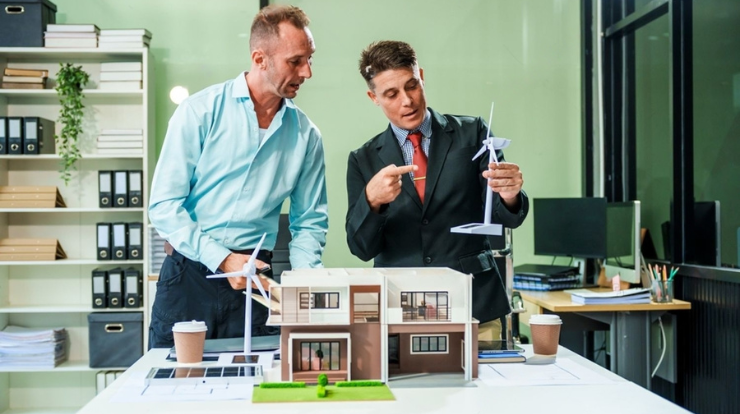Visualizing Island Resort Masterplans with Dubai Scale Models

Architectural scale models in Dubai are playing a key role in the visualization of luxury island resort masterplans. These physical representations help developers, investors, architects, and stakeholders clearly understand the full layout of the project. In a competitive real estate market like Dubai, where island developments are often ambitious and complex, these models offer unmatched clarity.
Understanding the Masterplan Vision
Luxury island resort masterplans often span vast areas. They include a mix of private villas, overwater bungalows, spas, marinas, restaurants, and leisure zones. The full scope of these features is hard to convey through 2D plans or digital renders alone.
Architectural scale models Dubai give a three-dimensional overview of the complete layout. They reveal how different resort zones connect, where green spaces are located, and how guests will move across the site. This clarity helps project teams ensure the design flows smoothly from one area to another.
Highlighting Coastal and Marine Features
Dubai is known for its man-made islands and waterfront projects. When designing island resorts, coastal integration is a major focus. Scale models are used to visualize beachfront alignment, wave barriers, boardwalks, and even artificial lagoons. Designers replicate water with clear resin or acrylic elements.
Marinas, jetties, and water villas are also precisely modeled. These details allow stakeholders to assess how well the resort interacts with its natural and built environment.
Showcasing Luxury Amenities
Luxury island resorts compete on the strength of their amenities. These often include rooftop lounges, infinity pools, private cabanas, helipads, and floating decks. Architectural scale models built in Dubai showcase these in miniature, offering a tactile preview of what guests can expect. Lighting is frequently added to highlight spas, restaurants, or event spaces. This helps buyers and investors see the resort’s luxury appeal in a way no blueprint can offer.
Supporting Investment and Marketing Efforts
High-end island resort developments often seek global investors. When presenting these projects abroad, Dubai-based developers rely on scale models as part of their pitch. A well-built model can impress clients at trade shows, launch events, or private meetings.
The models offer a sense of scale and elegance that digital presentations lack. Investors can grasp the project’s vision immediately. They can walk around the model, observe details from multiple angles, and even interact with dynamic features.
Enabling Regulatory Review and Approvals
In Dubai, large-scale developments must undergo a detailed approval process. When island resorts are planned, environmental impact, transportation access, and safety zones must all be reviewed. Scale models help city planners and authorities understand how the resort fits into the surrounding infrastructure. In many cases, models are used in formal submissions to show compliance with zoning regulations, setback distances, and marine boundaries.
Demonstrating Guest Experience
Architectural scale models allow hospitality teams to map out the guest journey. How will guests arrive on the island? Where will check-in be located? What path will lead them to their suite? These questions are easier to answer when a model lays out the entire flow. Some Dubai model makers even build in removable sections or layers, showing underground service routes or hidden utility areas. This level of detail ensures a well-planned guest experience from arrival to departure.
Integrating Sustainable Design Elements
Sustainability is now a major focus in island resort planning. Architectural scale models in Dubai often include solar panel arrays, green roofs, desalination zones, and waste treatment areas. These are built to show how the resort minimizes environmental harm. Models can also feature preserved coral zones or reforestation areas. Such visual elements communicate the eco-conscious goals of the resort clearly to stakeholders.
Reflecting Architectural Identity
Each island resort has its own design identity. Some follow a minimalist theme, while others embrace traditional Arabian styles or tropical aesthetics. Architectural scale models help convey the chosen theme accurately. Material textures, color palettes, and architectural forms are all replicated. These models are often used by branding teams and architects to align the overall look of the resort with the intended customer experience.
Improving Design Through Iteration
Creating a physical model of the island resort also allows the team to test and improve the design. Dubai architects and developers often build multiple versions of a model. As feedback comes in from clients or authorities, changes can be applied to a new iteration. This process helps identify flaws in connectivity, spacing, or zoning that might not be obvious in a digital render. The ability to physically move elements and observe their spatial relation is invaluable.
Facilitating Collaboration Among Stakeholders
Island resort developments require input from many parties. These include architects, urban planners, environmental consultants, hotel operators, and government officials. A shared physical model becomes a common reference point. Meetings held around the model are more focused and productive. Each stakeholder can point to specific features, discuss changes, and visualize outcomes in real time. In Dubai’s fast-moving real estate environment, this form of collaboration accelerates decision-making.
Conclusion
Architectural scale models in Dubai are essential tools for visualizing luxury island resort masterplans. They bring large, complex projects into a format that is easy to explore and understand.
From showcasing water villas and private beaches to aligning guest paths and infrastructure, these models ensure that every detail of the resort is fully realized before construction begins. For developers aiming to create unforgettable island destinations, scale models remain one of the most effective planning and presentation tools available.

